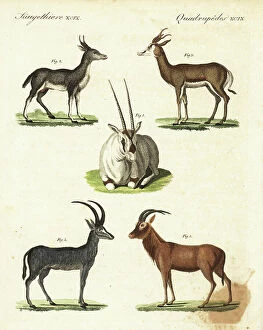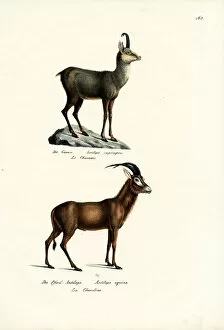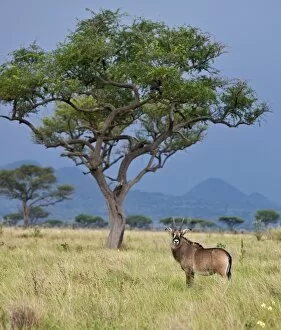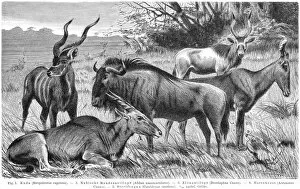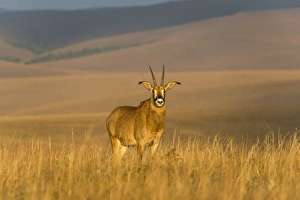Roan Antelope Collection
The roan antelope, scientifically known as Hippotragus equinus, is a majestic creature that captivates the hearts of nature enthusiasts worldwide
All Professionally Made to Order for Quick Shipping
The roan antelope, scientifically known as Hippotragus equinus, is a majestic creature that captivates the hearts of nature enthusiasts worldwide. This magnificent species can be found in various parts of Africa, including Mokala National Park and Nyika National Park. With its striking appearance and powerful build, the roan antelope stands out among other antelopes. Its coat showcases a beautiful blend of colors, resembling the breathtaking landscapes it calls home. From Khartoum to Fashoda, this remarkable animal has left its mark on diverse terrains. Dating back to 1836, Karl Joseph Brodtmann's lithograph from Heinrich Rudolf Schinz's Illustrated Natural History of Men and Animals immortalizes the roan antelope alongside another captivating creature - the chamois (Rupicapra rupicapra). These illustrations serve as a testament to their significance in natural history. In Kenya's Ruma National Park lies one of the few places where these large and powerful antelopes roam freely. The Lambwe Valley becomes an enchanting backdrop for witnessing their grace and agility firsthand. Similarly, Waza National Park in Cameroon provides sanctuary for these regal beings to flourish undisturbed. As we venture into South Africa's Mokala National Park or Malawi's Nyika National Park, we are greeted by the awe-inspiring sight of roaming herds. Their presence adds depth to these already picturesque landscapes while reminding us of nature's resilience. Engraved in 1895 with meticulous detail, antique depictions showcase not only their physical attributes but also capture their essence as symbols of African wildlife heritage. These engravings allow us to appreciate how deeply intertwined they are with our planet's biodiversity. Whether observed through historical lithographs or encountered during an African safari adventure today, encountering a roan antelope is an experience that leaves an indelible impression on all who witness it.



